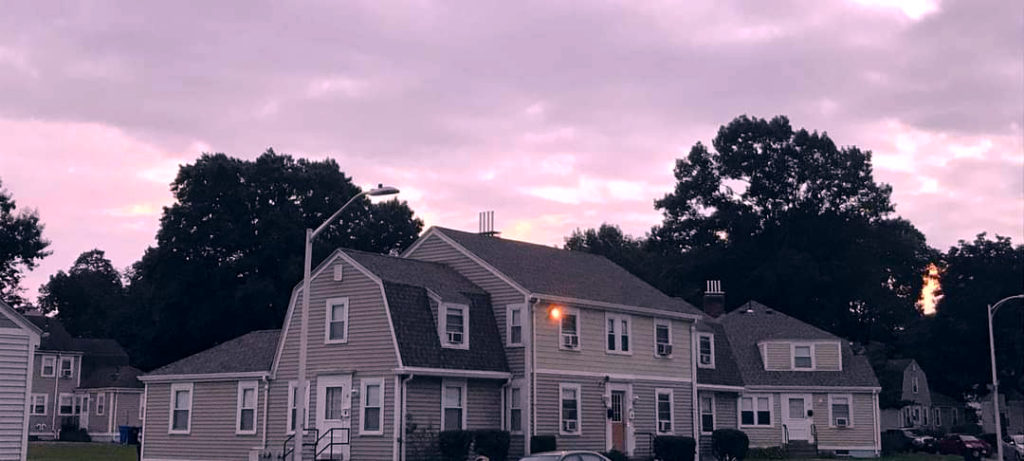
By Tomi Olsen
The Belmont Housing Trust (BHT) is committed to enhancing Belmont residents’ knowledge of affordable housing. We would like to define some terminology to make it clearer when we talk to the community about the need for affordable housing and ways to accomplish it.
The BHA and the BHT
There is often confusion about the difference between the Belmont Housing Trust and the Belmont Housing Authority (BHA). Each is a distinct organization. Housing trusts are typically nonprofit organizations while housing authorities are state agencies.
The BHT, like other housing trusts in the Commonwealth, is a nonprofit corporation (501c3) established by Chapter 126 of the Acts of 1999. Volunteer committee members are appointed for three-year terms, in Belmont’s case, by the Select Board. The mission of the BHTt is “to investigate and implement alternatives for the provision of affordable housing for persons of low, moderate, and middle income, and others, in the town of Belmont, whose needs may be identified from time to time.” In other words, to find or build additional low-income housing. This is the primary mission of all housing trusts.
The BHA is a state agency under the Department of Housing and Community Development (DHCD). It professionally manages state-aided public, conventional housing units in Belmont for low-income families, veterans, the elderly, and people suffering from disabilities, but allows for a full-time salaried executive director to oversee the day-to-day functions of the housing authority, including maintenance.
The BHA board is made up of five members, four of whom are elected by the citizens of Belmont, for overlapping five-year terms. The fifth is appointed by the governor. The board sets policy and is the fiduciary of the authority. Board members are paid a quarterly stipend from the rent collected from the tenants.
The BHA manages approximately 262 housing units: 100 family units at Belmont Village and 154 units for seniors and people with disabilities at Sherman Gardens. In conjunction with the Department of Mental Health, BHA also oversees an eight-bedroom duplex for people suffering from mental illness. The BHA also administers 10 state-aided Alternative Housing vouchers and 47 federally aided Section 8 Housing Choice vouchers.
Belmont Village was originally built by the town from 1949 to 1950 for returning veterans and their families. The oldest resident veteran in Belmont still lives in Belmont Village where he raised his family.
In September 2020, the BHA board entered into an agreement with the Cambridge Housing Authority for the day-to-day management of the BHA. At that time, there were few qualified candidates available to become executive directors, although the professional market has since changed. The authority’s contract with the Cambridge Housing Authority permits it to be “suspended or terminated” without penalty or cause by either party given 60-day notice.
Area median income
Since affordable housing is scarce, with waiting lists throughout the Commonwealth often measured in years, affordable housing applies stringent criteria to applicants, beginning with income. To qualify for affordable housing, an applicant or applicant’s family must have a household income no greater than 80% of area median income (AMI).
AMI reflects the comparative income of cities and towns within the US Department of Housing and Urban Development’s Metro Fair Market Rent Area. Belmont is one of over 100 communities within this market. The benchmark used for this group is the median income, aka income for the 50th percentile. The most recently calculated AMI for this region is $120K.
Affordable housing eligibility
Affordable housing eligibility starts at 80% of AMI, or no more than $96K. It should be noted, however, that this high end cannot be considered “affordable” under the state’s 40B law. It is not eligible for inclusion on the Subsidized Housing Inventory. Those who qualify for affordable units fall into four categories:
- Extremely Low-income households (ELI) earn less than 30% of AMI
- Very low-income households (VLI) earn between 30%–50% of AMI
- Low-income households (LI) earn between 50%–80% of AMI
- Moderate-income households (MI) earn between 80%–100%
Eligibility also considers family size. Housing preferences exist for people lacking permanent housing, including veterans, people with disabilities, and older people. Homelessness takes precedence. This means that if an affordable unit becomes available, a person or family experiencing homelessness is the first to be notified of an available unit.
| Single person | Four-person household | |
| Extremely Low Income | $29,450 | $42,050 |
| Very Low Income | $49,100 | $70,100 |
| Low Income | $78,300 | $111,850 |
A person or family can be considered homeless if they reside in an affordable housing unit that is being renovated and is temporarily uninhabitable. This occurred in February 2022 when the Affordable Housing Trust of Cambridge completed the purchase of a private five-bedroom home adjacent to the Belmont Village property and immediately installed a family from one of their Cambridge Housing Authority units which was being renovated. The family continues to be a Cambridge Housing Authority client although the surrounding homes in Belmont Village are under the BHA. While there are other serious issues with this arrangement, at a minimum, this is a very confusing situation.
Once an applicant becomes a tenant, they pay 30% of their income for rent if utilities are included or 25% if they are not included.
Applying for affordable housing
The BHA participates in the Common Housing Application for Massachusetts Public Housing (CHAMP). This is an online system where families seeking affordable housing can apply for low-income housing and in a community where they’d like to live. Again, given the severity of the housing need and availability, applicants may be able to relocate to any community of their choice, anywhere in the Commonwealth.
Public housing
This refers to multiple housing units in one location. Belmont Village and Sherman Gardens are considered public housing.
Section 8
Another affordable housing option is Section 8, a voucher program which allows voucher holders to select rental units from the community’s general housing stock. These units, often apartments, must be designated by the owner under the Section 8 program. The Section 8 program establishes the rental limits, often by the number of bedrooms. Section 8 also determines the rent a tenant must pay—typically 30% to 40% of their income. The balance of the rent is paid by the federal government. Section 8 vouchers are mobile and follow the recipient, even to another state. The BHA currently accepts 47 federal mobile housing vouchers and one state mobile voucher.
Workforce housing
Workforce housing is a relatively new category resulting from the high cost of owning a home in Massachusetts. Workforce housing is described by the Urban Land Institute (ULI) as “housing affordable to households earning between 60% and 120% of area median income. Workforce housing targets middle-income workers such as police officers, firefighters, teachers, health care workers, retail clerks, and the like.” While Massachusetts Governor Charlie Baker has deemed adding workforce housing a priority given the needs of the lower-income groups, it seems unlikely that this need will be met.
Providing affordable housing
Given the demand and the limited number of affordable units, one method for increasing housing stock is to build new buildings/units. This has been the focus of the BHT’s application for Community Preservation Act funds for the past three years. The BHA has been awarded grants of $193,000, $250,000, and at this recently concluded FY2023 Town Meeting, $400,000. These most recent funds are to design and develop additional affordable housing units on Sherman Gardens property. The Affordable Housing Trust of Cambridge, which is also a development company, is the contractor for this project.
Massachusetts General Law Chapter 40B
This 1969 law requires cities and towns to demonstrate that at least 10% of their housing stock is affordable. Towns with less than 10% affordable housing are subject to “unfriendly 40B developments,” in which the developer or property owners can override local zoning and build a housing development that includes at least 25% affordable units. Belmont has experienced an unfriendly 40B development with the construction of the Royal Belmont near Route 2 on the Cambridge line.
Based on the 2010 census, Belmont has not yet met the 10% standard. That census states that Belmont has 10,117 housing units, of which 673 are affordable (6.65%). The 2020 census may result in a different number but has not yet been computed.
Towns that do not meet the 10% standard must show the progress of adding to their housing stock at a rate of 0.5% to 1.0% per year. They must also adopt a DHCD-approved Housing Production Plan. Doing so can provide a town with years of “safe harbor,” allowing them to reject unfriendly 40B developments. In 2018, the BHT passed the Belmont housing production plan and has now begun to update it.
Zoning tools
The Commonwealth uses several zoning tools to produce affordable housing. Massachusetts General Law provides for Chapter 40R projects which give local neighborhood input into the development. The process involves creating a smart-growth-zoning overlay district that includes dense residential and mixed-use areas near transportation hubs.
Once the smart growth overlay district is adopted, communities can receive funds from a Smart Growth Housing Trust Fund. The Oakley Development on Belmont Street (formerly Our Lady of Mercy property) was permitted through a 40R smart growth overlay district.
Also, the town has passed recent overlay zoning districts that have helped to zone areas for higher density housing that include affordable units. Examples of this type of development include The Bradford in Cushing Square and the Residences at Bell Mont/McLean.
Inclusionary zoning is another tool that requires a proportion of units in a newly constructed development to be designated as “affordable.” Inclusionary zoning was an important tool in planning the Bel Mont/McLean property.
In January 2021, Massachusetts enacted MGL Chapter 40A S3A. This new law requires multifamily housing by right in eligible areas near transit hubs. The draft of the statute’s guidelines was presented by Robert Hummel, Belmont senior planner, to the Belmont Select Board on April 11, 2022. His presentation is available on the town website.
According to Hummel’s presentation, to comply with Section 3A:
- Belmont must establish one (or more) by-right zoning districts that total at least 50 acres and have a zoned capacity for 2,176 units.
- Belmont is not mandated to build this many units, only to create zoning districts that allow for them.
- Multiple zoning districts may be used to comply, as long as they meet Section 3A’s criteria.
Belmont has multiple train stations and bus lines; thus the town has flexibility for zoning district locations.
Tomi Olson is a member of the Belmont Housing Trust and served as an elected commissioner of the Belmont Housing Authority.



Sorry, the comment form is closed at this time.